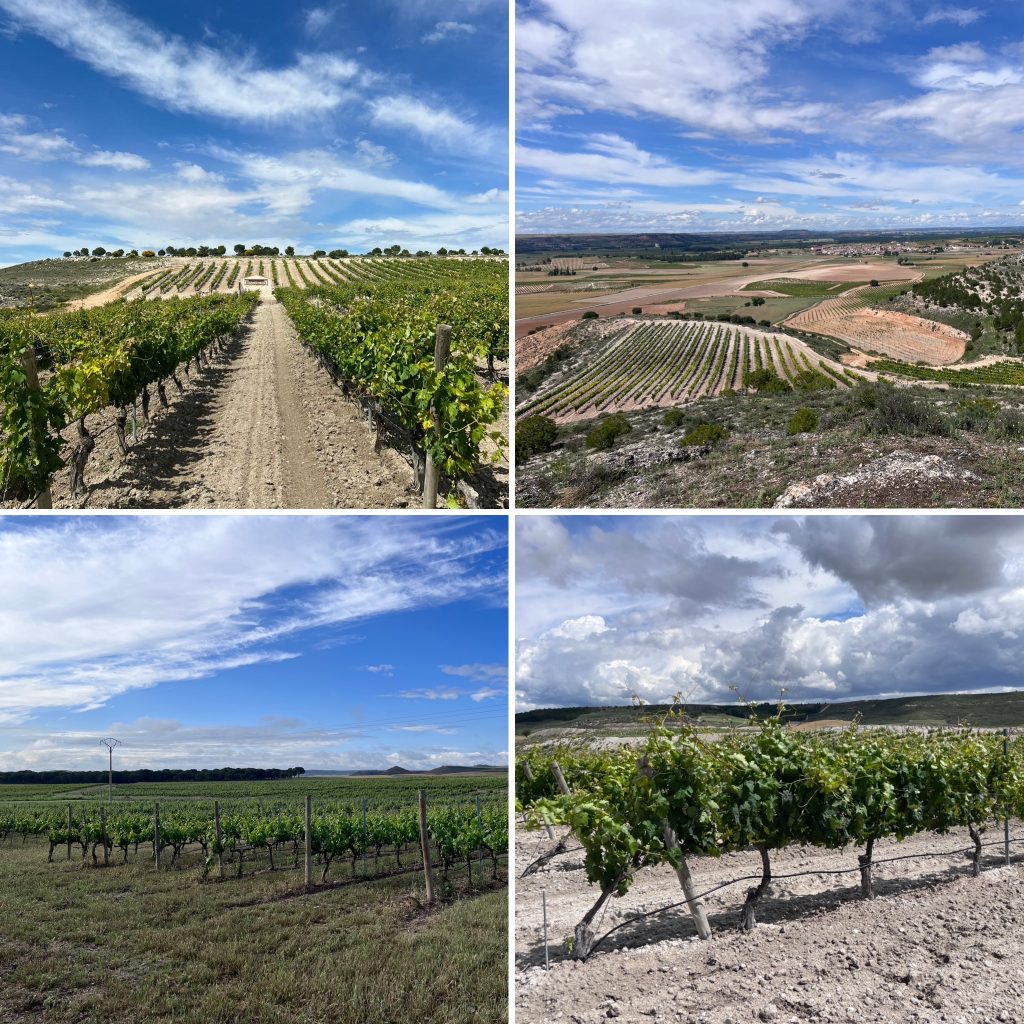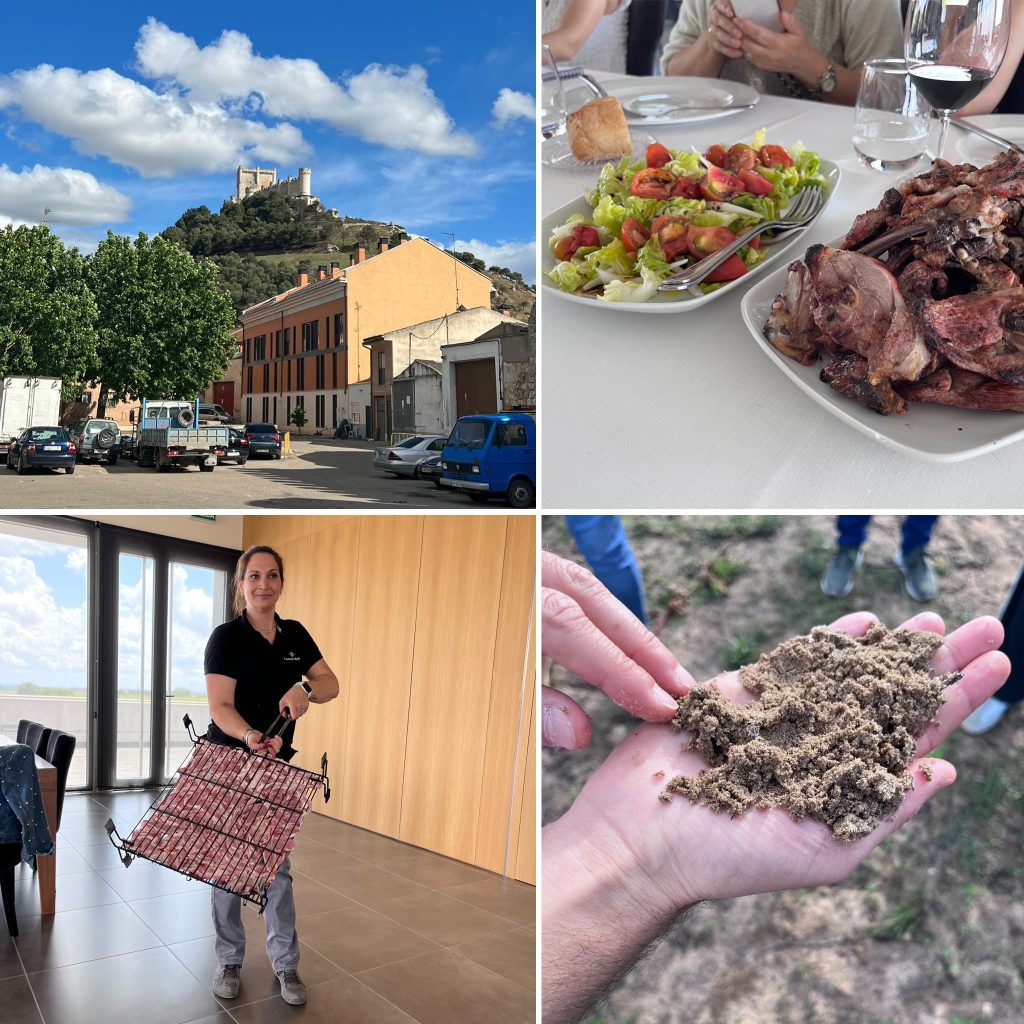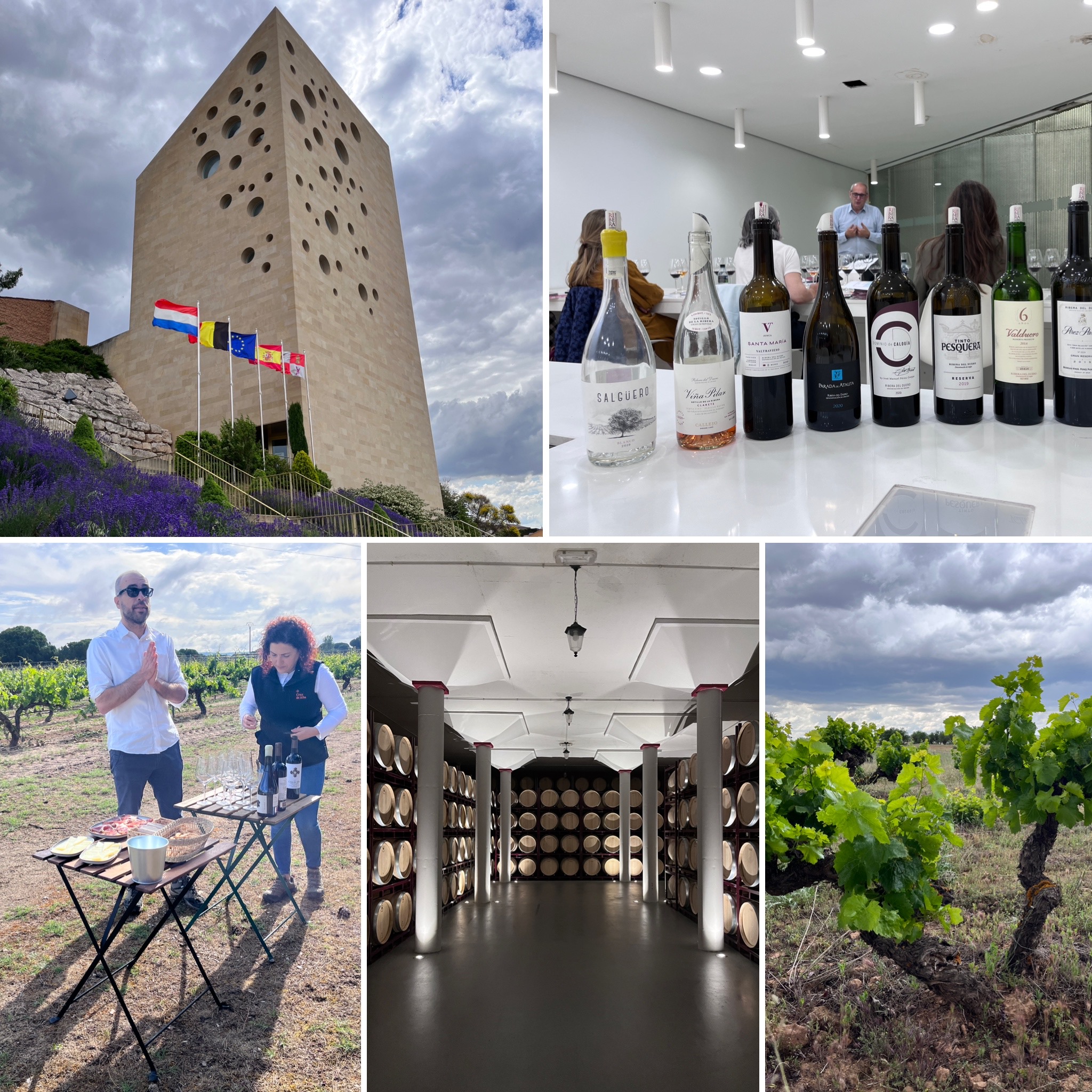Exploring the Enchanting Elegance of Spain’s Ribera del Duero.
Spain’s Ribera del Duero wine region is a mesmerizing land where history, tradition, and viticulture unite to create some of the world’s finest wines. Nestled along the banks of the Duero River in the heart of Castilla y León, this region boasts a rich winemaking heritage, breathtaking landscapes, and an unwavering commitment to producing wines that capture the essence of the land. From its unique climate to its diverse grape varietals, Ribera del Duero offers an unforgettable wine experience for enthusiasts and connoisseurs alike.
As official ambassador of this exciting wine region the Consejo Regulador of the Denominación de Origen Ribera del Duero invited us for a tour through the region, along beautiful vineyards and interesting winemakers.
A History Steeped in Tradition
Dating back centuries, the Ribera del Duero region has a deep-rooted history in winemaking. The ancient Romans are believed to have introduced viticulture to the area, leaving behind a legacy that still thrives today. However, it was in the 19th century that the region’s modern winemaking journey began, as local winemakers adopted new techniques and practices that would lay the foundation for the exceptional wines produced today.
At the heart of every esteemed wine region lies an organization that safeguards its authenticity, quality, and heritage. In the case of Ribera del Duero, this role is fulfilled by the Consejo Regulador of the Denominación de Origen Ribera del Duero. Established in 1982, this regulatory council is the guardian of Ribera del Duero’s winemaking traditions and standards, ensuring that every bottle that bears the denomination embodies the essence of the region.
A Tapestry of Landscapes
The Ribera del Duero landscape is a work of art in itself. The undulating vineyards create a patchwork of green and gold, interspersed with ancient olive groves and wheat fields. The region’s unique geography, flanked by the Duero River and the foothills of the Cordillera Ibérica mountain range, contributes to its distinctive microclimates. As visitors traverse the rugged terrain, they are met with breathtaking vistas that change with the seasons, from the verdant vitality of spring to the golden hues of autumn.
The unique terroir of Ribera del Duero plays a pivotal role in shaping the character of its wines. The region’s high elevation, ranging from 720 to over 1,000 meters above sea level, results in a continental climate with distinct day-night temperature variations. This diurnal temperature shift lends the grapes a longer ripening period, allowing for the development of complex flavors and balanced acidity. The chalky soils, locally known as “suelos de cascajo,” further contribute to the grapes’ distinctive characteristics, imparting minerality and structure to the wines.
Grapes and Winemaking
Ribera del Duero is renowned for its commitment to the Tempranillo grape, known locally as “Tinto Fino” or “Tinta del País.” This grape thrives in the region’s climatic conditions and yields wines of great depth, elegance, and aging potential.
Winemakers following the rules of the D.O. can also blend Tempranillo with a number of other varieties, to create more complex and well-balanced cuvées. The approved varietals are: Cabernet Sauvignon, Merlot, Malbec, Garnacha Tinta and Albillo Mayor. The minimum percentage of Tempranillo in a blend needs to be 75% however.
Traditional winemaking techniques are still revered in Ribera del Duero, with many producers embracing time-honored methods. Oak aging is a hallmark of the region’s wines, with extended periods in both French and American oak barrels contributing to the wines’ distinctive flavors and aromas. This marriage of tradition and innovation has elevated Ribera del Duero wines to international acclaim.
Increasingly however winemakers are also creating ‘new styles’ such as the use of concrete or steel and old oak, which give more room to the fruit profile and created a more ‘honest’ wine showing the terroir. It is exactly the mixture of styles and new developments that make this region so interesting to watch.
Richness in Old Vines: Preserving History and Elevating Wines
One of the most captivating aspects of Ribera del Duero’s winemaking tradition lies in its abundance of old vines, often referred to as “viñas viejas” in Spanish. These venerable vines, some of which are over a century old, contribute to the region’s unique character and the exceptional quality of its wines. The presence of these ancient vines not only speaks to the region’s rich history but also plays a vital role in crafting wines of unparalleled depth, complexity, and expression.
Ribera del Duero is home to a substantial number of old vines, with a significant portion of the vineyards boasting vines that are decades old or even over a century in age. It’s estimated that around 20-30% of the vineyards in the region are comprised of these venerable vines, numbers that ensure Ribera del Duero a lead in Spain, but even wine regions world-wide. This prevalence of old vines underscores the region’s commitment to preserving its viticultural heritage and harnessing the potential that these aged plants offer.
The sight of gnarled, weathered vines with deep roots intertwining with the soil is a visual testament to Ribera del Duero’s vinous legacy. Many of these old vines were planted by previous generations, their roots digging deep into the region’s chalky soils. These vines have withstood the test of time, surviving harsh climatic conditions and adapting to the land’s nuances. Their longevity is a testament to the generations of winemakers who have lovingly tended to them, ensuring that their fruits continue to yield wines of extraordinary character.

Popular Grape Varieties and Iconic Wines
Ribera del Duero’s viticultural legacy is anchored by its most revered grape variety, Tempranillo. This indigenous grape thrives in the region’s climatic conditions and is the backbone of many of its world-class wines. Tempranillo’s thick skin and small berries contribute to wines with deep color, intense aromas, and the ability to age gracefully.
- Tempranillo: The Heartbeat of Ribera del Duero
Tempranillo is celebrated for its versatility and ability to showcase a range of expressions. Young Tempranillo wines often display vibrant red fruit flavors, elegant tannins, and a hint of spice. With age, these wines evolve into a tapestry of complex aromas, including ripe black fruits, leather, tobacco, and subtle oak influence.
- Albillo Mayor: A Touch of White Elegance
In addition to Tempranillo, Ribera del Duero also explores the potential of a white grape variety. Albillo Mayor, an indigenous grape, is gaining attention for its role in producing distinctive white wines. The variety was present in Ribera’s vineyards for generations, mostly co-planted with Tempranillo.
The grapes were mainly blended with Tempranillo as a ‘winemaker tool’ or used to produce rose wines. Increasingly however this variety is taking center stage as a monocepage. These wines exhibit refreshing acidity, floral aromas, and notes of citrus and stone fruits. While white wines remain a small portion of the production, the emergence of Albillo Mayor showcases the region’s commitment to diversity and innovation.
- Robust Reds and Innovative Blends
While Tempranillo is the star, winemakers in Ribera del Duero also embrace the art of blending. Adding Bordeaux varieties like Cabernet Sauvignon and Merlot introduces complexity and structure to the wines. These blends often exhibit bold fruit character, velvety textures, and a harmonious balance of flavors. The minimum percentage of Tempranillo in these blends needs to be 75%, in order to classify as a ‘Ribera del Duero’ wine.
- Crianza, Reserva, and Gran Reserva
Ribera del Duero wines are classified based on aging requirements. “Crianza” wines are aged for at least two years, with a minimum of one year in oak barrels. “Reserva” wines undergo three years of aging, with at least one year in oak. The pinnacle is the “Gran Reserva,” which must be aged for five years, with two years in oak. These aging regimes contribute to the wines’ refinement, depth, and ability to develop nuanced flavors over time.
- Iconic Wines and Renowned Producers
Several wineries in Ribera del Duero have gained international acclaim for their iconic wines. Vega Sicilia’s “Único” stands as a paragon of longevity, a wine of remarkable complexity that ages gracefully for decades. Dominio de Pingus, led by visionary winemaker Peter Sisseck, produces the acclaimed “Pingus,” known for its power and elegance. Bodegas Emilio Moro crafts wines that showcase the purity of Tempranillo, while Aalto and Abadía Retuerta also contribute to the region’s exceptional offerings.
Ribera del Duero’s popularity on the global wine stage is a testament to the mastery of winemakers who have harnessed the potential of its unique terroir and grape varieties. Through Tempranillo’s transformation from vine to bottle, the region produces wines that are both emblematic of its heritage and expressive of modern winemaking expertise. From its robust reds to the emerging white wines featuring Albillo Mayor, Ribera del Duero remains an enchanting destination for wine lovers seeking the artistry and passion that define this storied region.
Sustainability and Innovation
Modern winemaking in Ribera del Duero is marked by a growing commitment to sustainability and innovation. Many wineries are adopting organic and biodynamic practices, prioritizing environmental stewardship and the health of their vineyards. Cutting-edge technology is also being harnessed to enhance quality while maintaining the region’s authentic character. This blend of tradition and innovation ensures that Ribera del Duero wines remain both timeless and relevant in a rapidly evolving wine landscape.
Cultural Riches
Ribera del Duero is not only a haven for wine enthusiasts but also a treasure trove of cultural heritage. The region’s medieval towns and villages exude charm and character, with cobblestone streets, historic churches, and well-preserved castles that offer a glimpse into Spain’s storied past. Festivals celebrating the harvest and local traditions further enrich the cultural tapestry, providing visitors with a taste of the region’s vibrant way of life.
No wine experience is complete without exceptional gastronomy, and Ribera del Duero delivers on this front as well. The local cuisine, rooted in the traditions of Castilla y León, complements the wines perfectly. Rich and hearty dishes such as roasted lamb, succulent suckling pig, and flavorful chorizo sausage showcase the region’s culinary prowess. These savory delights harmonize with the wines’ structure and depth, creating a symphony of flavors that dance on the palate.

Conclusion
As the sun sets over the picturesque landscapes of Ribera del Duero, one cannot help but be captivated by the essence of this extraordinary wine region. From its iconic red wines rooted in the Tempranillo grape to the emergence of unique offerings like Albillo Mayor, Ribera del Duero embodies the harmonious blend of tradition and innovation. Its story is one of a deep connection to the land, a reverence for history, and an unyielding commitment to crafting wines of exceptional quality.
Ribera del Duero’s winemaking journey is a tale of resilience and evolution. The region’s commitment to preserving old vines, embracing diverse grape varieties, and experimenting with different winemaking techniques is a testament to its adaptability and dedication to excellence. The resulting wines are not merely beverages but are vessels that encapsulate the terroir, the culture, and the artistry that define Ribera del Duero.
Whether sipped in a rustic bodega, savored in a quaint village square, or enjoyed on the world stage, Ribera del Duero’s wines are an invitation to embark on a sensory voyage. They tell a story of generations who have tilled the soil, nurtured the vines, and crafted wines that capture the spirit of a place and its people.
We would like to thank the Consejo Regulador of the Denominación de Origen Ribera del Duero and Pitch PR for organizing this beautiful trip, and all the wineries and winemakers for their insights and hospitality.

